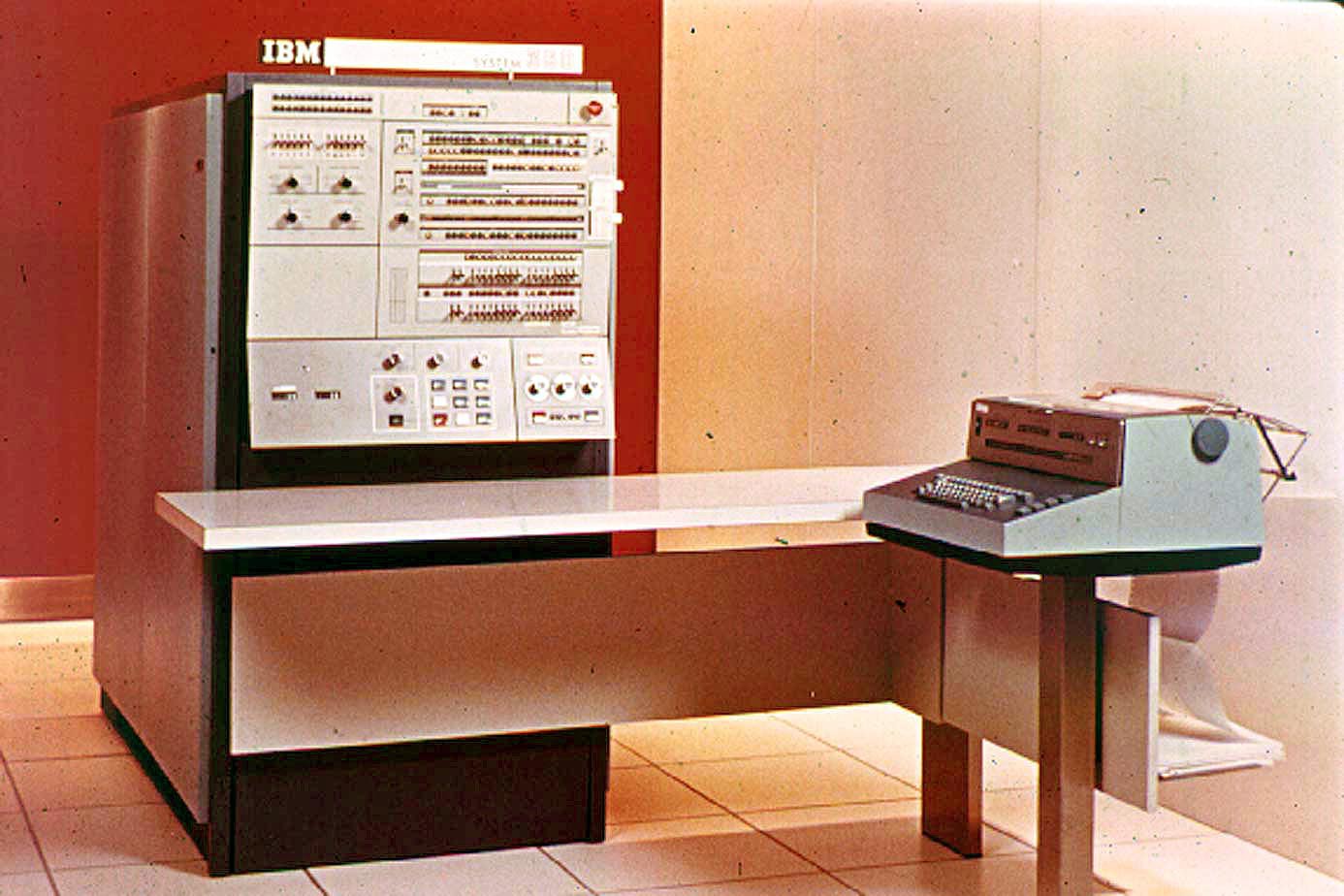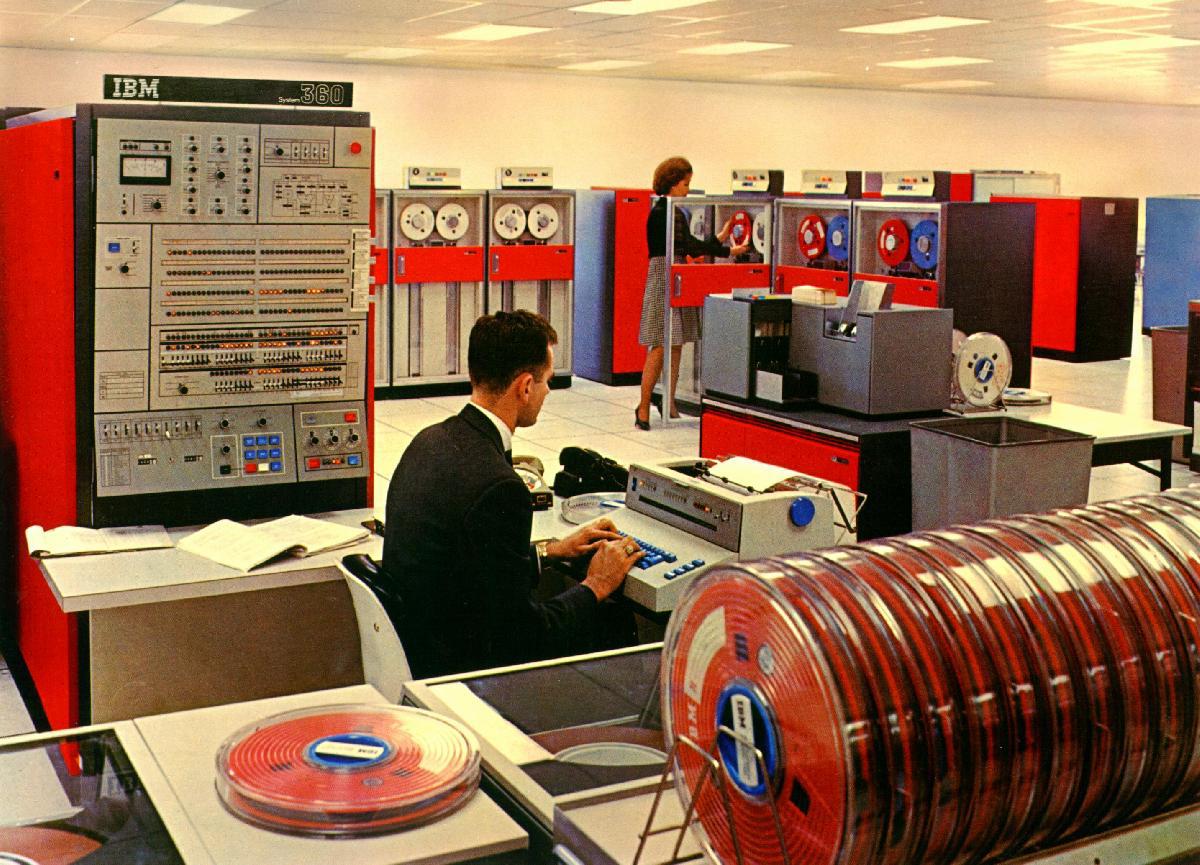Computer that changed everything

On April 7, we celebrated the 50th anniversary of computers that made one of the first revolutions in the market of "corporate computing". This model was not the first, other computers were already on the market, but it was the heroine of today's article that turned the idea of “computers for business”. I think everyone already guessed that we are talking about the legendary IBM / 360, which in many ways laid the approaches that became the basis of modern computers, both personal and "big", without which we would not have seen all the wonders of modern IT.
The first question to answer is: why did IBM / 360 become a coup for the market? Rejecting various reasons, which are many, you should immediately call the main one - the right approach to architecture and design allowed IBM to make the new model available (relatively, of course). This is what allowed smart machines to step out of business and university computing centers in the field of business, and private business was happy to learn a new, incredibly convenient tool.
I'll tell you about some of the innovations that IBM has implemented in System / 360, and you can easily compare them with what we use now. Personally, I was surprised when I first learned how much we owe System / 360.
')
The first IBM innovation used so far was the announcement of a whole line of computers that differed in price, size and performance, but used a common set of commands (except for a few models for specific markets). This allowed companies to purchase a simpler model, and as their needs grow, they can upgrade their hardware without having to rewrite software that has already been debugged.
The first announcement promised 6 IBM / 360 models and 40 peripherals. The models 30, 40, 50, 60, 62 and 70 were announced. The first three were to replace the “lower” line of the IBM 1400 series and were sold before 1965. Older models were developed to replace the IBM 7000 series, but they never went on sale, since they were replaced by models 65 and 75, which were released in late 1965 and early 1966, respectively.

Over time, many other interesting variations appeared. For example, the budget 20 model, which had only 4K of base memory, 8 16-bit registers (and not 16 32-bit ones like other models) and a reduced set of instructions. Another budget model, number 22, was essentially a redesigned 30 model with slower I / O ports and memory limitations.
Of course, non-budget segments also developed. For example, in model 67, IBM first implemented the technology of dynamic address translation (DAT or dynamic address translation), which is now known to us under the name "virtual memory". DAT, in turn, made it possible to implement work with time sharing.

In models 65 and then 67, support for two processors was implemented, and "dual-core" modifications of these systems were supplied to the market.
The IBM System / 360 was first applied microcode technology. In a conventional architecture, a high-level language program is translated into a series of processor instructions that the latter executes. Actions when executing commands are implemented in hardware and cannot be changed. In the case of the use of microcode, it is he who determines how certain commands will be executed, assigning “lower-level” atomic operations to machine instructions. By changing the microcode, it was possible to change how machine instructions are executed, which in turn made it possible to correct any errors, which was impossible when implementing machine commands "in hardware". In turn, the use of microcode has complicated the set of machine commands and provide more opportunities for developers.
A disadvantage of the microcode approach is the slower operation of the computer, so in the older models of the System / 360 IBM used an “hardware” implementation that excluded the microcode.
Since backward compatibility was very important for IBM customers who had already invested a lot of money in software development for their previous computers, System / 360 had support for previous-generation computer emulation. For example, the 30th model could emulate the IBM 1400 system, and the 65th, IBM 7094. For this, a complex combination of hardware, microcodes and a virtualization program was used, which allowed the old code to work in the new system. In the first models to start the program in virtualization mode, the computer had to be stopped and restarted. Later, in 85 models and System / 370, similar programs could already be started by the operating system and work simultaneously with native applications.
For what else should we be grateful to System / 360?
- nine-track magnetic tape, which has become practically the standard for storing digital information;
- code table EBCDIC;
- 8-bit bytes. Now this may seem surprising, but during the development of System / 360 for financial reasons they wanted to limit the byte to 4 or 6 bits. Another variant of bytes with variable length and bit addressing was considered as in IBM 7030;
- byte memory addressing;
- 32 bit words;
- IBM architecture for fractional numbers (in fact, the standard for 20 years);
- The hexadecimal constants used in the System / 360 documentation have supplanted the octal ones used before.
Of course, the next generation of computers replaced the System / 360. System / 370, System / 390 and System z. Many other companies built their computers based on the System / 360 architecture. Among them are Hitachi, UNIVAC, Amdahl, the Soviet series of EU computers and several others. System / 360 also became the basis of System / 4 Pi - protected from radiation and mechanical effects of computers for use in aviation and space technology.
Now in the world there are several more System / 360 computers that have not been disassembled for parts, but, unfortunately, none of them work. The cost of maintaining such a large computer is too high.
If this topic is of interest to readers, in the next article I will continue the story about this revolutionary computer.
Source: https://habr.com/ru/post/219449/
All Articles